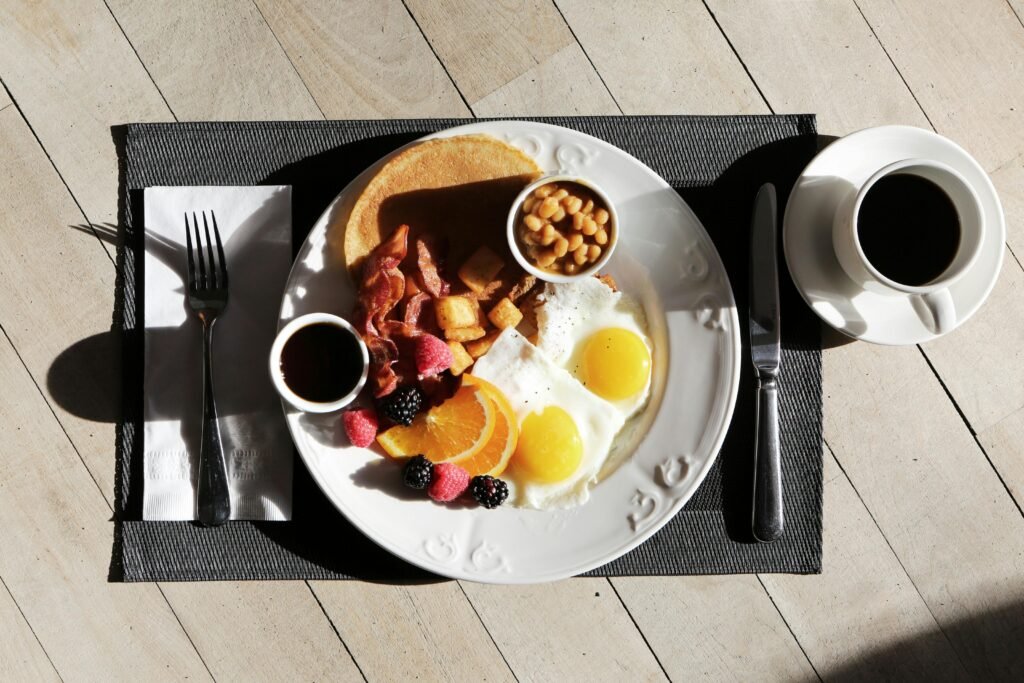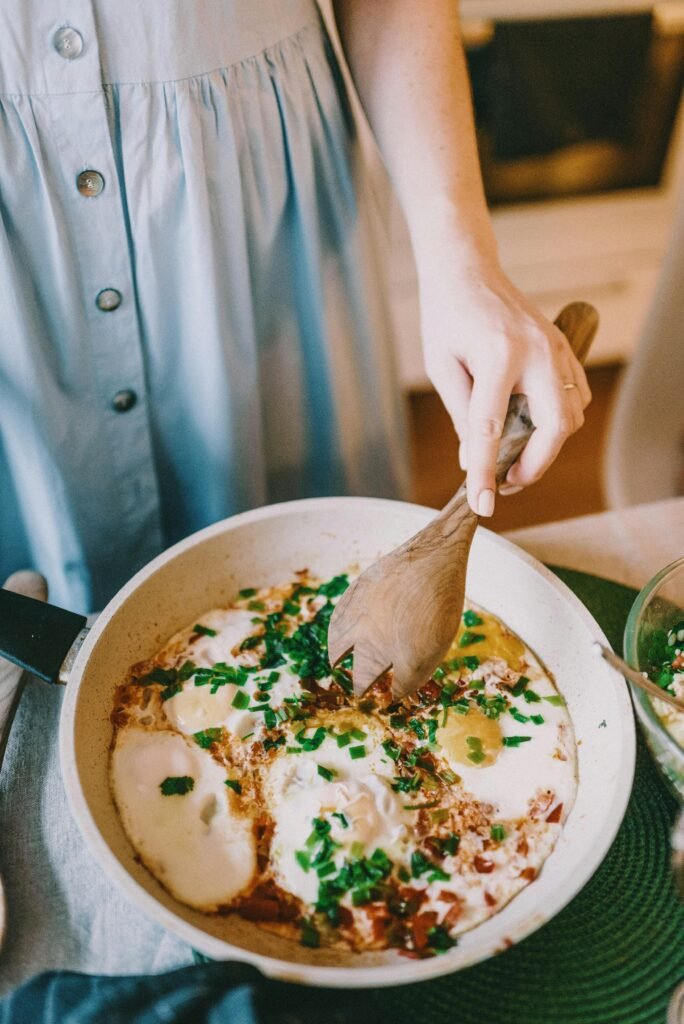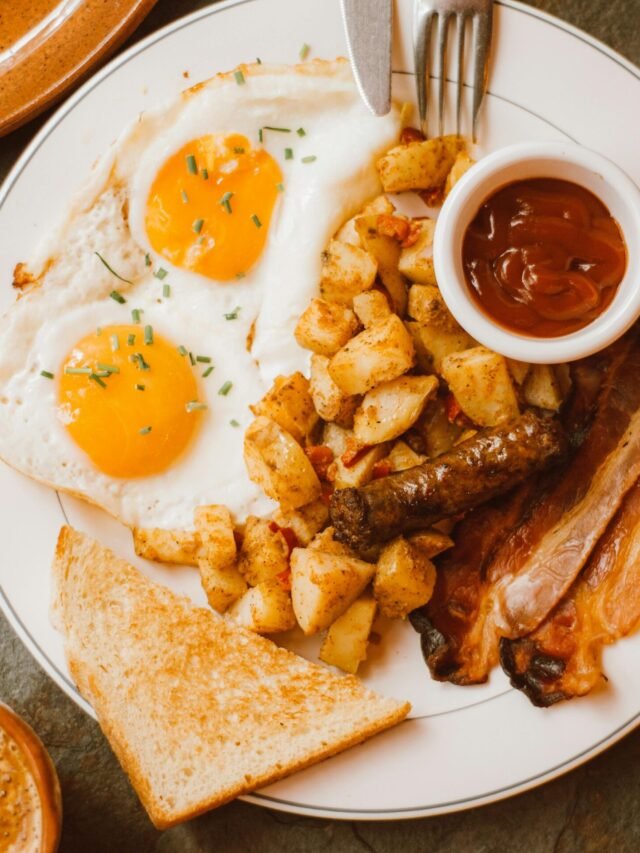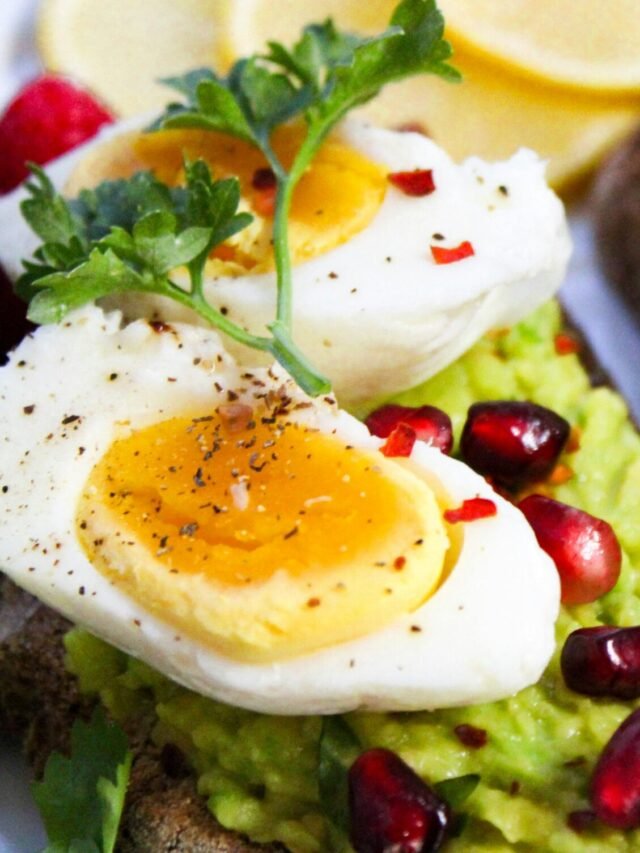
There’s something really special about starting the day with a hearty breakfast that warms both your stomach and your soul. Grits and eggs, a beloved Southern classic, are the perfect combination of creamy, savory comfort and protein-packed goodness. Whether you’re enjoying a weekend brunch or need a satisfying meal to start a busy day, this dish offers the best of both worlds.
The Ingredients: Simple Yet Essential
When it comes to making the perfect grits and eggs, simplicity is key. The basic ingredients—grits, eggs, butter, salt, and pepper—are the foundation of this comforting dish, each contributing to a harmonious balance of flavors and textures. Here’s a breakdown of how each ingredient contributes to the dish
Grits
Choosing the Right Grits: Grits come in different types — instant, instant and stone ground. For best results, choose stone grinds, which retain more of the corn’s natural flavor and texture. While they take longer to cook, the payoff is a rich, creamy consistency that’s perfect for this dish.
Why grits work in this recipe: Grits provide a hearty, satisfying base that pairs beautifully with eggs. Their neutral flavor allows them to absorb seasoning and any add-ins you choose, such as cheese or herbs, making them versatile and customizable.
Eggs
The Perfect Protein Partner: Eggs are the perfect complement to fat, boosting nutrition and protein. Whether you like them scrambled, fried or poached, eggs bring a silky texture that contrasts well with creamy grits.
Butter
A touch of creaminess: Butter is essential to add richness and depth to the batter. This helps create a smooth, creamy texture and enhances the natural flavor of the corn. A generous drizzle of butter after cooking is the secret to achieving a velvety finish.
Cooking the Grits: Achieving Creamy Perfection
Cooking grits to creamy perfection is the key to making a delicious grits and eggs breakfast. With a few simple steps, you can transform basic fats into a rich, smooth and flavorful dish that serves as the ideal base for your eggs. Follow this detailed guide to ensure your teeth come out perfectly every time.
Measure the Ingredients
Grits: For one serving, measure out about 1/4 cup of uncooked grits. You can adjust the amount depending on how many people you are serving.
For one serving, that means about 1 cup of liquid. You can use water, broth (for more flavor) or a mixture of water and milk (for extra creaminess).
Boil the Liquid
Bring to a boil: In a medium saucepan, bring your liquid to a boil over medium-high heat. If using broth, you’ll get more depth of flavor, while water and milk provide a neutral or creamy base.
Start of cooking: Add a pinch of salt to the boiling liquid. The fat absorbs the flavors as they cook, so adding salt at this stage ensures they cook well.
Add the Grits Slowly
Prevent lumps: Slowly add the measured grinds to the boiling liquid, stirring constantly with a whisk or spoon. Stirring helps prevent lumps from forming when you add the grits.
Reduce the heat: Once the grits are added, immediately reduce the heat. Grits need to be gently simmered to cook evenly and develop their creamy texture.
Preparing the Eggs: Your Way
Like butter and eggs, scrambled eggs are an essential part of a simple yet hearty breakfast. Whether you prefer sunny-side-up eggs with runny yolks or over-easy eggs with a slight center, technique is the key to getting them right. Here’s how to make both versions of scrambled eggs perfectly.
Choose the Right Pan
Non-stick skillet: A non-stick skillet is ideal for frying eggs as it prevents sticking and allows for easy flipping. If using a regular skillet, make sure it’s well seasoned or add a little more fat to prevent the eggs from sticking.
Pan size: Use a small to medium pan if you’re cooking one or two eggs, or a larger pan if you’re frying several eggs at once.
Add the Fat
Butter or oil: Heat 1 tablespoon of butter or oil (or a mixture of both) over medium heat. Butter adds nutrition and flavor, while oil helps keep the edges crisp. If you prefer, you can use olive oil for a slightly healthier option with a different flavor profile.
Heat the fat: Melt the butter and allow it to foam slightly without letting it brown. For the oil, heat until it shimmers. This ensures that the eggs cook evenly and don’t stick.
Putting It All Together: Grits and Eggs on the Plate
Creating a visually appealing plate of fat and eggs not only enhances the dining experience but also makes the dish more appetizing. Here are some simple yet creative ways to assemble and serve this hearty breakfast that will impress anyone at the table.
The Classic Approach: Grits as the Base
Spoon the grits into the center: Start by spooning a large portion of the creamy grits into the center of your plate or shallow bowl. Spread them out a bit to create a smooth, even surface but leave a little texture for a rustic feel.
Top with fried eggs: Carefully place the fried eggs on top of the grits (sunny side up or convenient). The light yolk contrasts with the yellow color creating an attractive look.
Elevated Plating: Layered and Textured
Layer the ingredients: For a nicer presentation, create layers by spreading a thin layer of grits on a plate, then placing the eggs next to each other or slightly overlapping. It separates the textures and allows the eater to mix them together at leisure.
Add colorful vegetables: Surround the eggs with lightly sautéed vegetables such as spinach, cherry tomatoes or bell peppers. This not only adds color but also makes the dish more vibrant and nutritious.

Conclusion
Making the perfect eggs and butter is more than just preparing a basic breakfast—it’s about mastering the balance of textures, flavors, and presentation. With creamy, buttery grits and perfectly fried eggs, this dish delivers both comfort and satisfaction. By following the step-by-step process for cooking eggs perfectly and frying eggs to your liking, you can create a hearty meal that’s both delicious and visually stunning. Whether you’re serving it up for a casual family breakfast or whipping it up for a weekend brunch, grits and eggs are sure to become a favorite.


